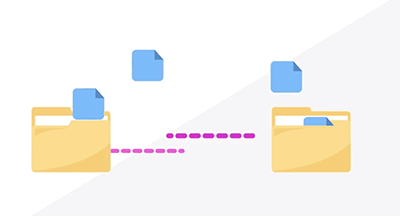
Better behavior and better academics go hand in hand.
You would be hard pressed to find any group of administrators or teachers who do not agree with this sentiment. Yet, few schools or districts routinely record and analyze behavioral data. For most, the big picture information that could be used to make a difference is instead giving way to reactive measures.
To uncover the causes and triggers at the heart of disruptive behavior, you need to be able to turn data into action – action that can help mitigate disruptive behavior and improve academic achievement for both the disruptor and the disrupted. Let's take a look at the elements of an effective behavior management strategy.
Behavior ↔ Academics
It’s a chicken-or-the-egg situation: does better behavior lead to improved academics, or does academic success increase the likelihood of better behavior?Whichever way you lean, teachers and administrators agree that there’s a strong correlation between the two. A recent Kickboard report on climate and culture initiatives in America’s schools found that 91% of educators (defined as both teachers and administrators) believe that students who are academically at-risk often have behavioral, social, or emotional issues at the heart of their struggles, but it's hard to pinpoint the cause when only a third of those educators are recording or looking at the data.
Much like a sudden drop in grades, disruptive behaviors can be a red flag for underlying social and emotional issues. Left undetected or unaddressed, these issues can impede a student’s progress and the progress of his or her peers.
The Three Overarching Processes
A scattershot approach to reducing disruptive behaviors might bring isolated victories, but a strategically planned, data-driven effort is the only way to ensure sustained success. Most student information systems should provide the tools necessary to do the tracking, so the next logical step is to get some documented processes in place.Pattern spotting: Automated notifications and reporting can help you and your staff identify trends that might otherwise be overlooked. By having access to a regular summary of infractions, you will start to see patterns emerge within discipline graphs broken down by action type, time of day, offense type, location, or other criteria. The value of empirical evidence is an ability to act faster than you would based on observational data alone. Even one infraction averted is worth the effort.
Smarter staffing: If you aren’t using data to make staffing decisions, you’re probably not optimizing your budget or the time and expertise at your disposal. When you're armed with knowledge of the hot spots and prime times for misbehavior, you can adjust your staffing to ensure full coverage where and when you need it most. One extra hall monitor here, a little more lunch room coverage there, and you've already mitigated the risk of incidents.
Program assessment: You can’t implement data-driven programs like PBIS if you don’t know what works and what doesn’t. Use your data analysis tools to hone in on specific metrics – whether that’s the number of suspensions, frequency of incidents, or other factors – that can help you determine the impact of your efforts. With an effective behavioral data strategy, you can present your administrators or your board with the evidence to support new initiatives. It's hard to argue with numbers.
How to Get Started
According to the Data Quality Campaign, strategies that empower decision-making require students, parents, teachers, school leaders, and after-school partners to have access to “the right data in the right format at the right time.” Each school and each district has unique challenges, but there are some essential to-dos for every situation:Define your goals: The old saying that "nothing gets done that doesn't get measured" is especially true with data strategies. How can you measure success without defined metrics to measure it against? After one year of an established data strategy, goal setting becomes easy – you can measure progress based on behavioral data from the previous year. Check out this infographic to see how data can help a teacher improve outcomes throughout a full academic year, starting with goal setting.
Just getting started? Identify one or two behavioral issues that are having a negative impact on your learning environment. This might be different from school to school if you're in a larger district, but that's ok – each building should have its own strategy in place based on your higher-level recommendations. Disorderly passing times, disrespectful language, defiance or combativeness? Collaborate with principals to build a list of priorities, then map a specific strategy for each.
Make connections: The best behavioral data strategies help build bridges – between teachers and students, between school leaders in different buildings, even between schools and community agencies. When educators can share analytics in addition to anecdotes, other stakeholders (parents, after-school partners, administrators, and others) become more empowered to take action. At every level, incorporate opportunities for stakeholders to make connections, build relationships, and learn to understand and make decisions based on your data. If you don't have a skilled data analyst on your staff already, now is the time to find one.
Provide time & training: We can’t emphasize this enough: if data-driven decision making is truly a top priority, then time and training for teachers needs to be, too. Schedule common planning time during the school day and facilitate regular data conversations with colleagues, parents, and students. Build in opportunities for staff to meet with a data coach (or to become one!) and to practice using your behavior tracking tools. It would be a significant boon to K-12 education if every teacher prep program included a course devoted to data literacy. Until it does, it’s up to you as a leader to build it into your plan.
Looking Ahead
We should all look forward to a future where behavioral data use in schools is commonplace. The more you learn about behavioral trends within your schools, the better equipped you will be to respond to your students’ needs. Now is the time to build a strategy and start making data-supported decisions for your students’ academic, social, and emotional well-being.Find ideas, resources, and support by following #eddata, #classroommanagement,and #behaviormanagement on Twitter.
WHAT'S NEXT FOR YOUR EDTECH? The right combo of tools & support retains staff and serves students better. We'd love to help. Visit skyward.com/get-started to learn more.

|
Leah Kruger Director of Product Management |




